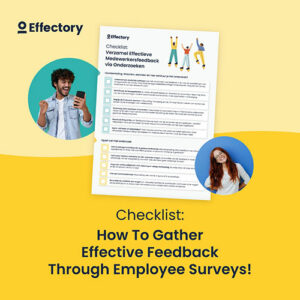Before the digital revolution heavily affected businesses, HR was fully equipped with and leaning on straightforward top-down org charts to outline the organizational structure. Everything is different nowadays in the digital age. New developments are arising in a velocity quicker than the speed of your WiFi connection. Think of AI, robotics, blockchain, big data and internet of things. These new developments force a different way of organizing your organization: flat, flexible, and with less managers. This changes the way you lead as an organization and confronts you with one big question: Is an HR strategy still relevant?
Lead in the digital age

What will change in your HR strategy
Your company will fall behind in the digital age if you stick to a rigid strategy (well, to the extent you still can anyway, in your daily operations). This does not mean that there is no HR strategy needed, because a strategy as such can be the script used to adapt to daily challenges. HR Strategy becoming unimportant? On the contrary, the role of an HR manager is becoming increasingly important company-wide. No longer a role that is exclusively administrative, but ever more, your current HR manager is more of a strategic change manager.
An HR strategy can be much more agile by not telling managers how to do things. On the other hand, you should then coach them to increase the confidence to act on their own initiative. You will have to collaborate in order for them to take more responsibility. Subsequently, they will be able to operate more autonomously – which allows them to react quicker and more adequately to the changes they are confronted with.
As an HR-professional you should be less concerned with operational tasks – applications, retirement and employees being dismissed – and focus more on the visionary part of your job. Ask yourself the question: What would be needed to make our employees start working differently? Think about how your teams are put together: Is this optimal, looking at age, experience and educational background?
The digital revolution, including new HR-tools, forces you to change your work flow. Therefore you should look for employees who are familiar with new technology and know how to use it.
How to gather feedback from your employees
The definitive checklist for creating your employee engagement survey.
DownloadHow to attract the right people and guide your current team?
To attract the right people you should develop an ‘employer brand’: start to consider your organization as a brand which aims to attract young talented people. Questions that can help you are: What are our core values? What do we believe in? Is our mission and vision clear? How appealing are these statements for new people? We already wrote a blog on this before: How to appeal to Millennials.
In many industries, young talented people are harder to snag than a house with a garden in Manhattan. As a consequence, many organizations have the opportunity to grow fast, but lack a skilled workforce to achieve this. It is of great significance that your current team is taken care of, because if they are happy, they will promote your organization. That promotion is exactly what you need to attract those scarce, young, talented people.
If your organization has to change, changes in your workforce are imminent. Employees will leave because they don’t want to deal with these changes. You’ll find employees who have difficulty adapting because of a lack of skill. How to act in these situations? Adopting digital tools is going to cause particular jobs to become redundant. Partially, you will be able to train your employees, but it is almost inevitable that you will have to let go of some.
During this time, some employees might experience uncertainty. We would advise you to give them space to develop through trial and error. Involve them in decision making processes whilst encouraging them to look at the organization they work in as their own. It will be challenging enough to navigate through all of the aforementioned aspects, yet whilst juggling all that, it is important to safeguard the workload and thus the work-life balance of your employees. Remember that them always being around does not necessarily mean they are more and constantly productive.
Also read: The secret of successful organizational change.
Three HR-implementations for digital leadership
You can lead your organization through this digital age with the three proposed implementations below. Successful implementation will both make your employees happy and be appealing to talented new employees.
1. Work on improving team dynamics
Your organization needs to be balanced between innovation, technology and creativity on the one hand; and experience and authority on the other. How to act when in doubt your organization is matching the aforementioned balance? Well, first of all, take a critical look at your workforce and work on creating flexible teams. Also think about the skills needed in your organization in the future. Flexible teams do not work in departments. Moreover, departments will not be needed when myou align temporary teams to work in focus on things that actually take priority for your organization. Finally, when you have implemented the new team structure, how do you ensure good team dynamics for better results?
2. Provide new learning opportunities
To keep up with digital transformations, continuous learning has become both inevitable and standardized in both formal and informal settings. Think of short courses and internal knowledge sharing. Learning new things should be your main focus – be it on work related topics or in personal development spheres. Whatever you do, make sure you then keep an eye on the progress.
3. Continuously check the happiness of your employees
The traditional way of measuring employee happiness (MTO) occurs once every two years and often takes up a lot of time and money from the organization, let alone energy from your employees. The survey is no fun to fill out, which leads to a lower response rate and little output that you can act on. Besides, the fast pace of development in this digital age requires frequent checking. Fortunately, there are clever HR-tools which allow you to conduct flexible research on employee happiness. When you take action on the outcomes, this will lead to more happiness and productivity at the office. The result, ultimately? Better organizational results.
Employee Engagement
Increase employee engagement through action-oriented feedback. Using a single platform, you can collect reliable data, analyze the results, and share insights.
view employee survey solution